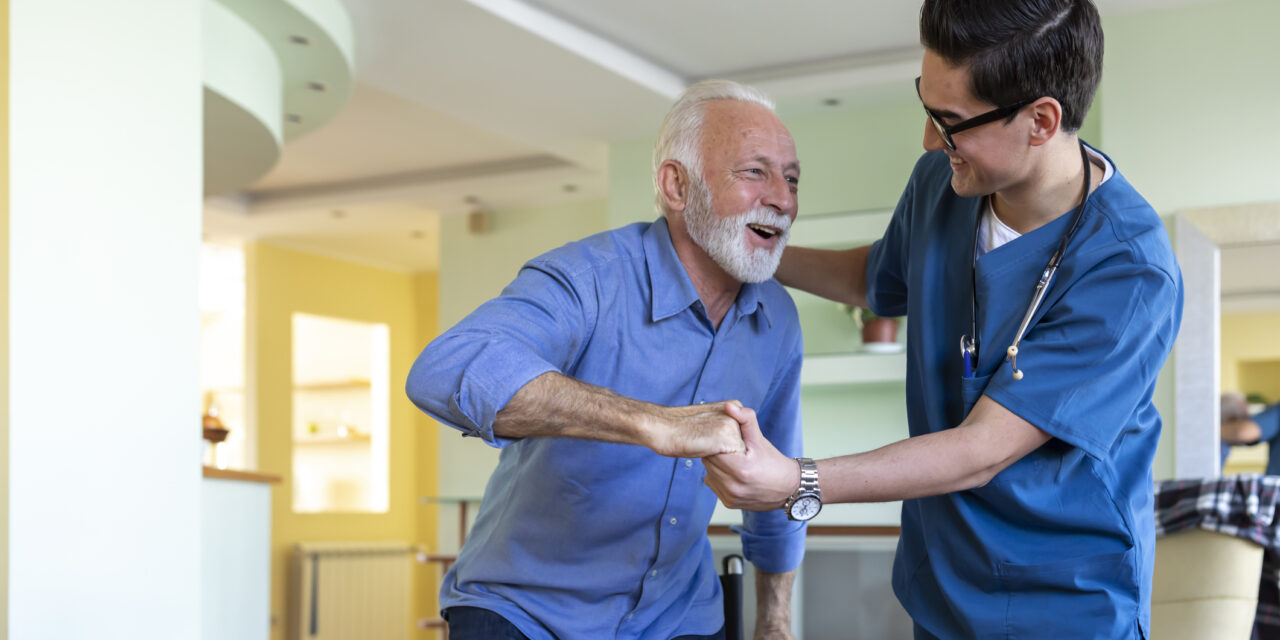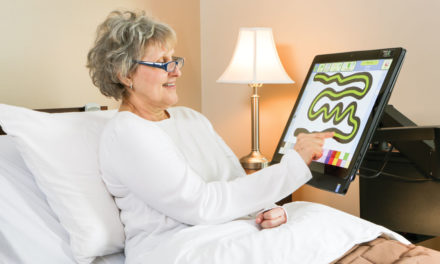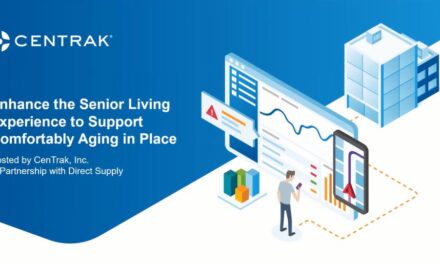Caring for seniors comes with its challenges as well as its rewards, and transferring a resident can be one of those challenges. Transferring assisted living residents safely and effectively is paramount. Many factors should be considered when residents have to move locations: the transfer plan; proper lifting; staff safety; and maintaining resident dignity are a few important considerations. However, out of the aforementioned, the two most imperative factors everyone involved in the transfer process should consider are resident dignity and staff safety – everything else falls under those two categories.
Resident Dignity
The resident experience before, during, and after a transfer is key to upholding and maintaining resident dignity. Falls can occur during this process, so it’s important to remember that stress should be kept to a minimum. While most elderly falls don’t result in serious injury, it can cause a crisis of confidence as well as an altered emotional and mental state for a resident. An elderly person can become withdrawn and feel a total lack of autonomy.
Even though a fall may not result in an injury, the amount of time it could take for a resident to become upright again in a standing or seated position can significantly affect their recovery. Lying on the ground too long can be the worst part of a fall. Post-Fall Syndrome is a serious condition that should be taken into consideration after a fall, and is a combination of spiraling, fear, anxiety, and social isolation. This is why it’s important a resident is given immediate and proactive care shortly after a fall occurs.
Additionally, if a resident is on the floor too long, other negative health issues can occur, such as: skin damage which results in pressure sores; hypothermia; dehydration; kidney failure via rhabdomyolysis; and even death.
The speed in which staff are able to return a resident to a seated or standing position is an important part of maintaining resident dignity because of the aforementioned. This is imperative for resident well-being, health, and overall safety. Delayed initial recoveries can happen when the “faller” remains floor-bound for 10-59 minutes – a relatively short timeframe, if we’re considering the effort needed to help a resident get upright again.
A “long lie” is considered when a resident is on the floor for up to 60+ minutes. Long lie impacts have the previously mentioned effects in addition to physical and physiological disruptions. The syndrome also affects performance components such as motor, neurological, mental health, and muscular atrophy.
When a long lie occurs, so can a reduction in daily activities. Occupational therapists believe it’s extremely important that residents return to their normal, day-to-day activities after a fall, and to spend time with friends, family, and community. This not only helps occupy their time, but also aids in bringing meaning and purpose into their lives, subsequently subverting some of the mental health negatives to a fall.
After a fall, whether it’s a short or long lie, it’s important to have the proper tools and products available to assist in getting a resident back on their feet. Mangar has a range of three lifting cushion products, which are ideally used in long-term care settings.
These products include:
- The Camel Lifting Cushion: a cushion which protects caregivers from injuries that they may receive through lifting a resident to a seated or standing position. This cushion is ideal for residents living with dementia, adults with learning disabilities, or bariatric/plus-size residents. It has a battery-operated compressor which makes it optimal for indoor or outdoor use, and a backrest that gives support to a resident during a lift. A resident’s feet will remain grounded during the lift, which is ideal for anyone with a cognitive impairment.
- The Eagle Lifting Cushion: This product helps lift residents in confined spaces, protects caregivers from lifting injuries, and cuts down on the time a resident is floor-bound, lifting quickly after a fall. It is ideal for long-term care homes, smaller assisted living communities or retirement homes, and for residents with cognitive impairment. The backrest provides the resident with extra support during a fall, and its battery-operated compressor is portable and lets the resident’s feet remain on the floor after a fall. This small option can also be packed away, out of sight.
The ELK Lifting Cushion: The ELK truly is a workhorse and can lift a person who weighs up to 1,000 lbs. Like the aforementioned products, it can protect caregivers as they provide help from getting injuries themselves, and it can be used in smaller spaces. The ELK works well for any long-term facility, EMS agencies, fire services, falls response, and acute care. But just because it can seemingly do it all doesn’t mean it’s not compact – it can be used to lift or move someone away from a wall or out of a bath, and it also has a battery-operated compressor, so it’s portable.
Staff Safety
One of the reasons why Mangar created such versatile products to help and assist in resident falls is so that staff remains safe as well. Using Mangar lifting cushions means that staff has to do little to no lifting or handling of a resident. All Mangar lifting cushions are also one-size-fits-all, so there’s no need to select a sling size like you may have to do with a host. Because the products have an inflatable component, it’s perfect for residents with fragile skin.
Residents can also feel safe and secure once lifted, allowing staff to feel the same; residents can even enjoy a cup of tea once they’re in an upright position with the aid of the Mangar cushions. There is no risk of wounds developing when using these products. When a resident’s feet remain on the ground during a lift, they automatically feel more secure, which is ideal for residents with dementia.
Using Mangar’s products also reduces physical strain on the caregiver. When using one of Mangar’s lifting cushions, a caregiver should feel no physical strain during a lift. In fact, this is why every emergency ambulance in the United Kingdom carries a Mangar lifting cushion. In its first year of using the ELKs on a fleet, one ambulance service saved $370k in sickness costs associated with back injuries.
Additionally, only one healthcare worker has to use Mangar lifting products – no help required. Of course, a risk assessment should always be performed by a clinician on-site pertaining to resident weight and size, and post-fall protocol established by an employer must be adhered to.
For staff, Mangar has an online training module which is free of charge to LTC organizations and employees who purchase Mangar products. In most cases, training takes an hour or less for new users. Larger organizations may opt in for training events so that manual handling techniques and post-fall management protocols can be shown and discussed as it relates to product use.
Ensuring that both staff and residents feel safe and secure with their post-fall equipment is key to maintaining a positive, happy home for residents and work experience for employees.
Find out more about Mangar products through Direct Supply®.




